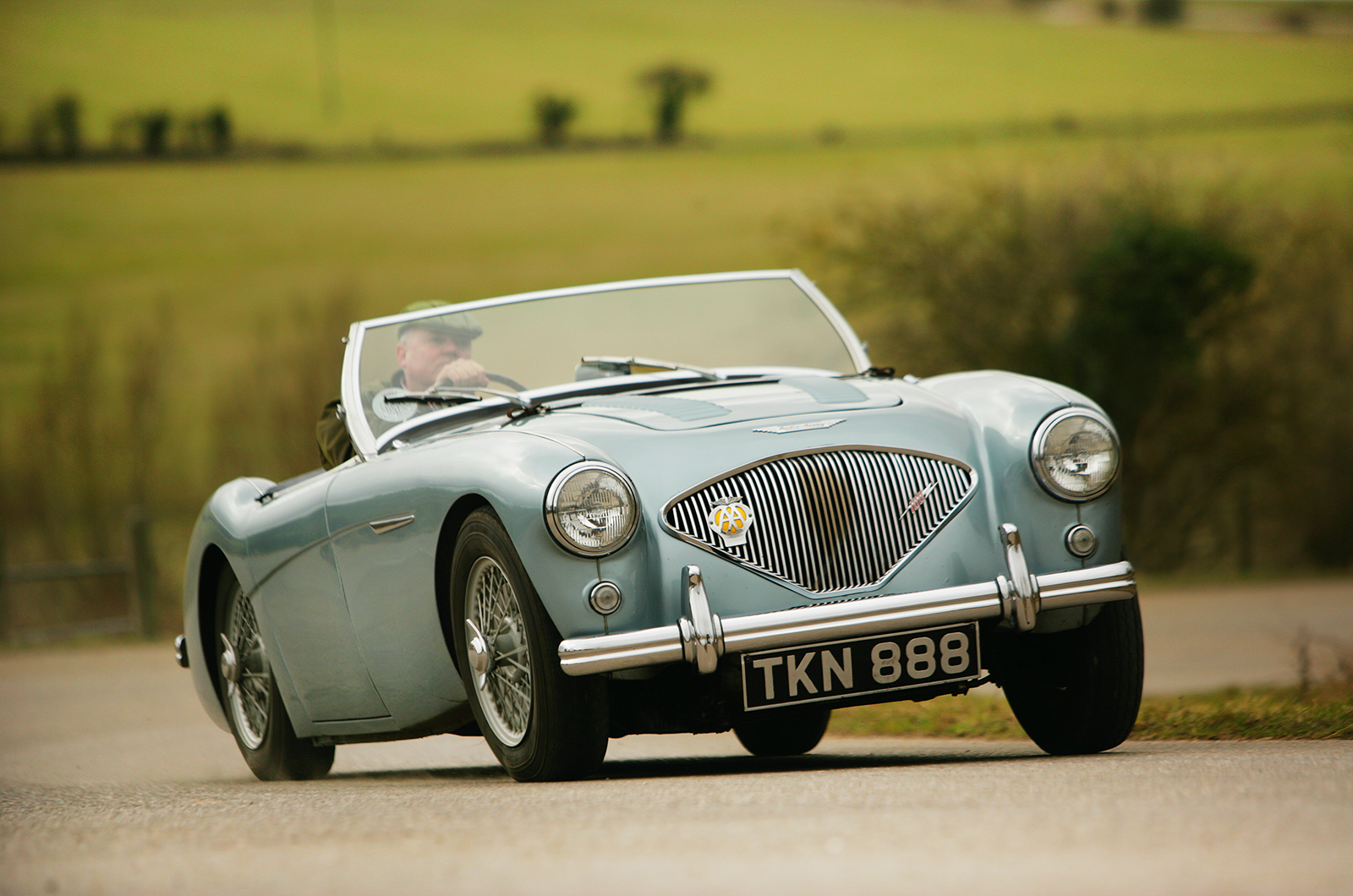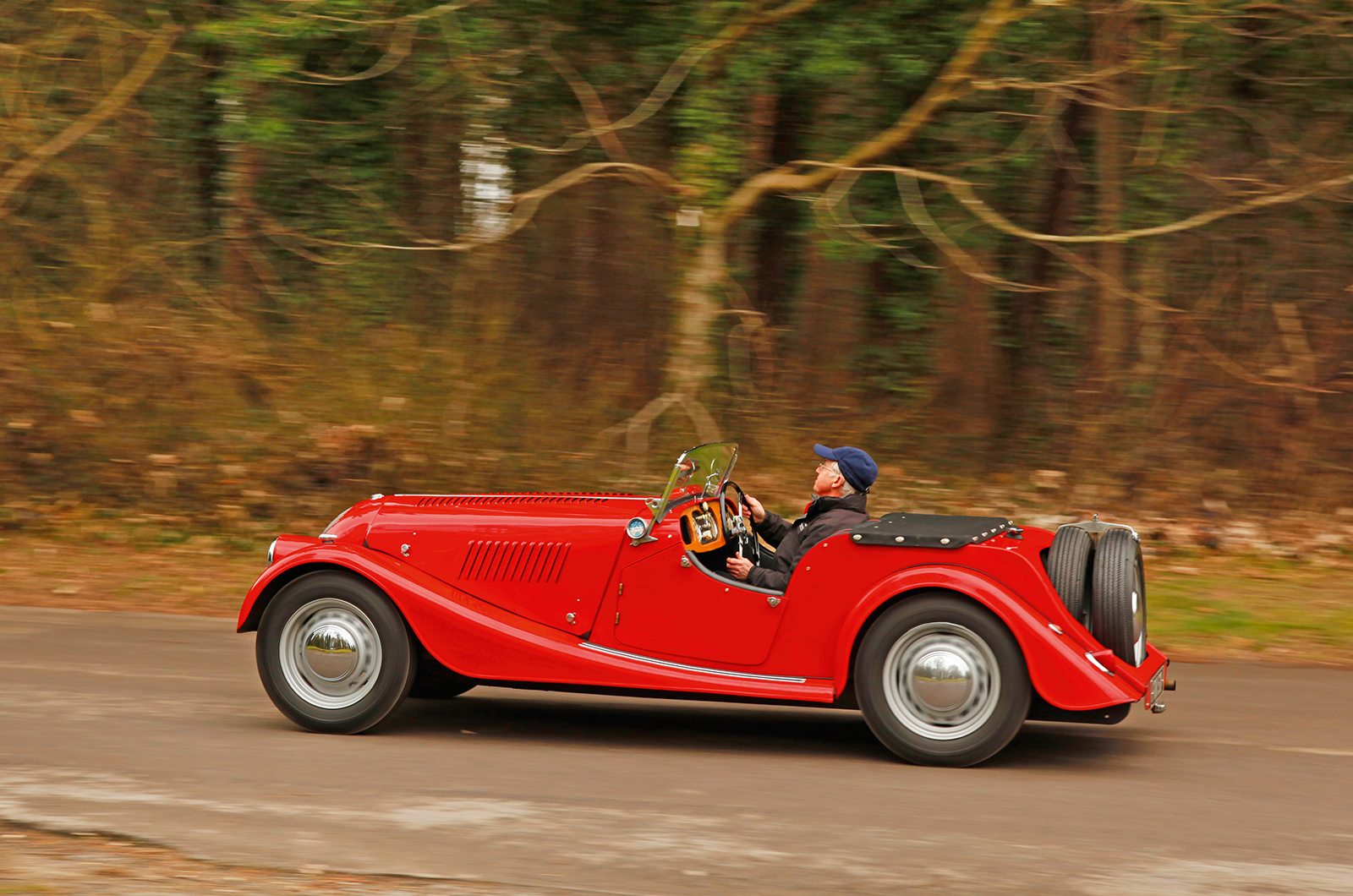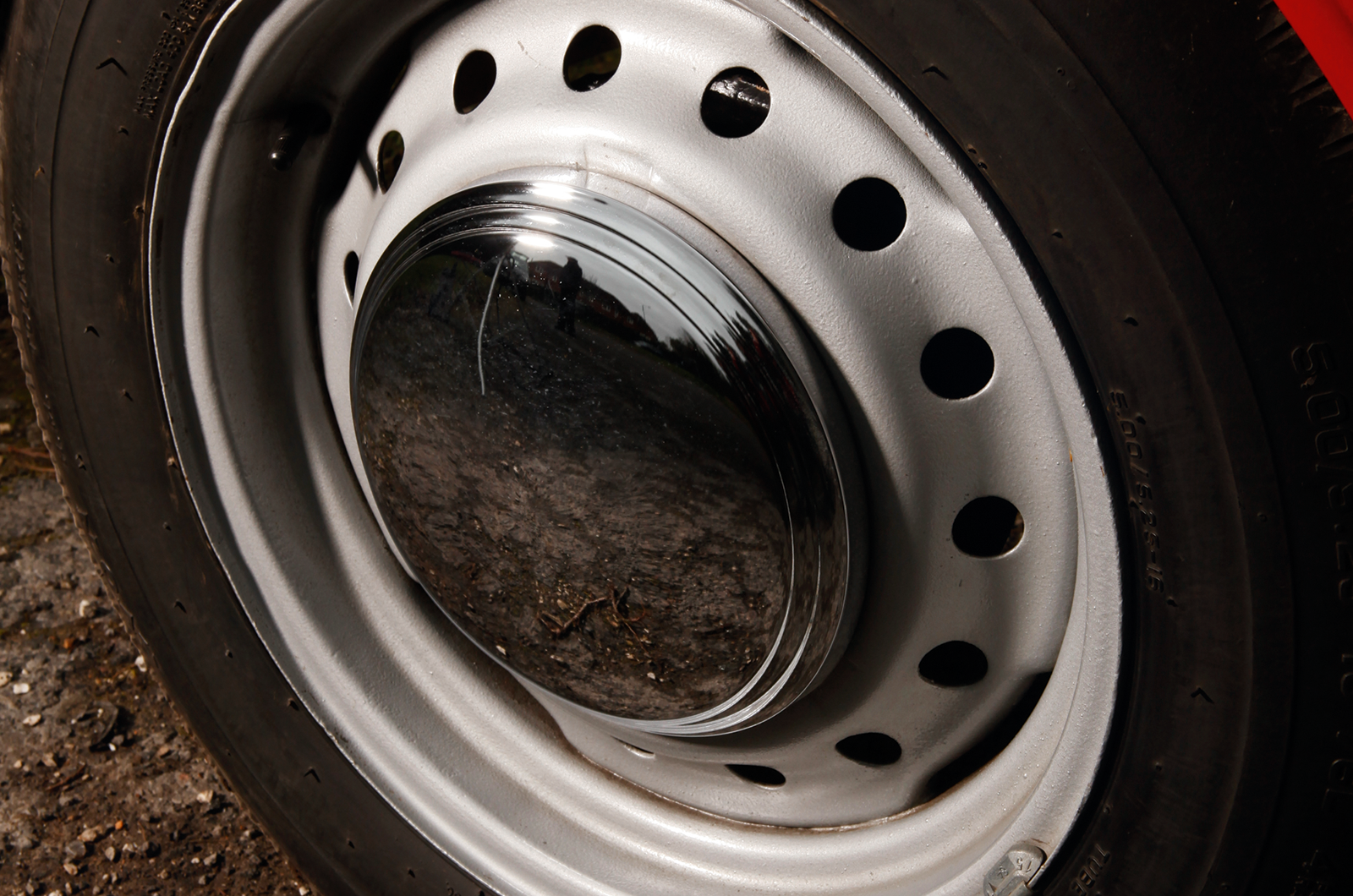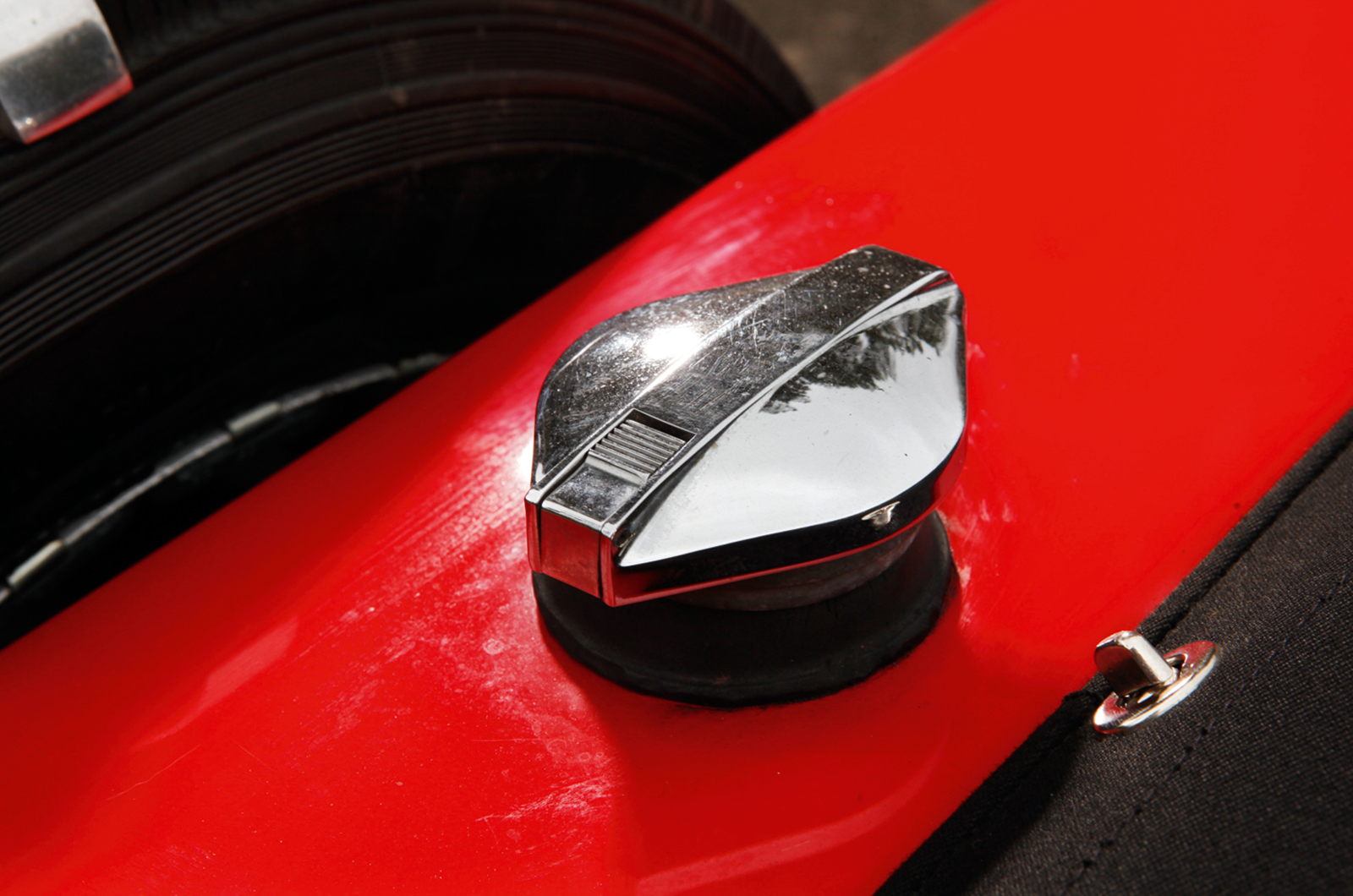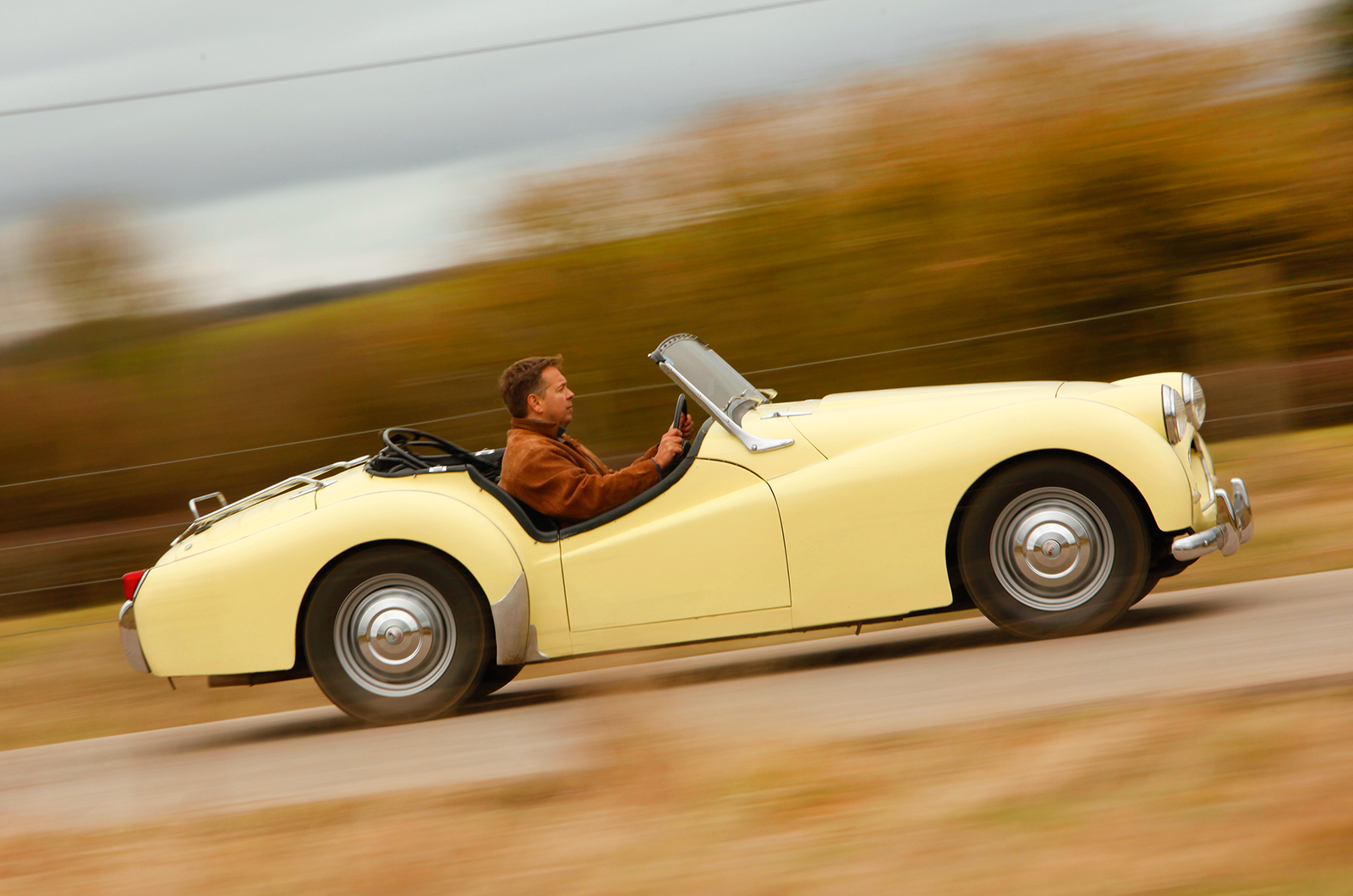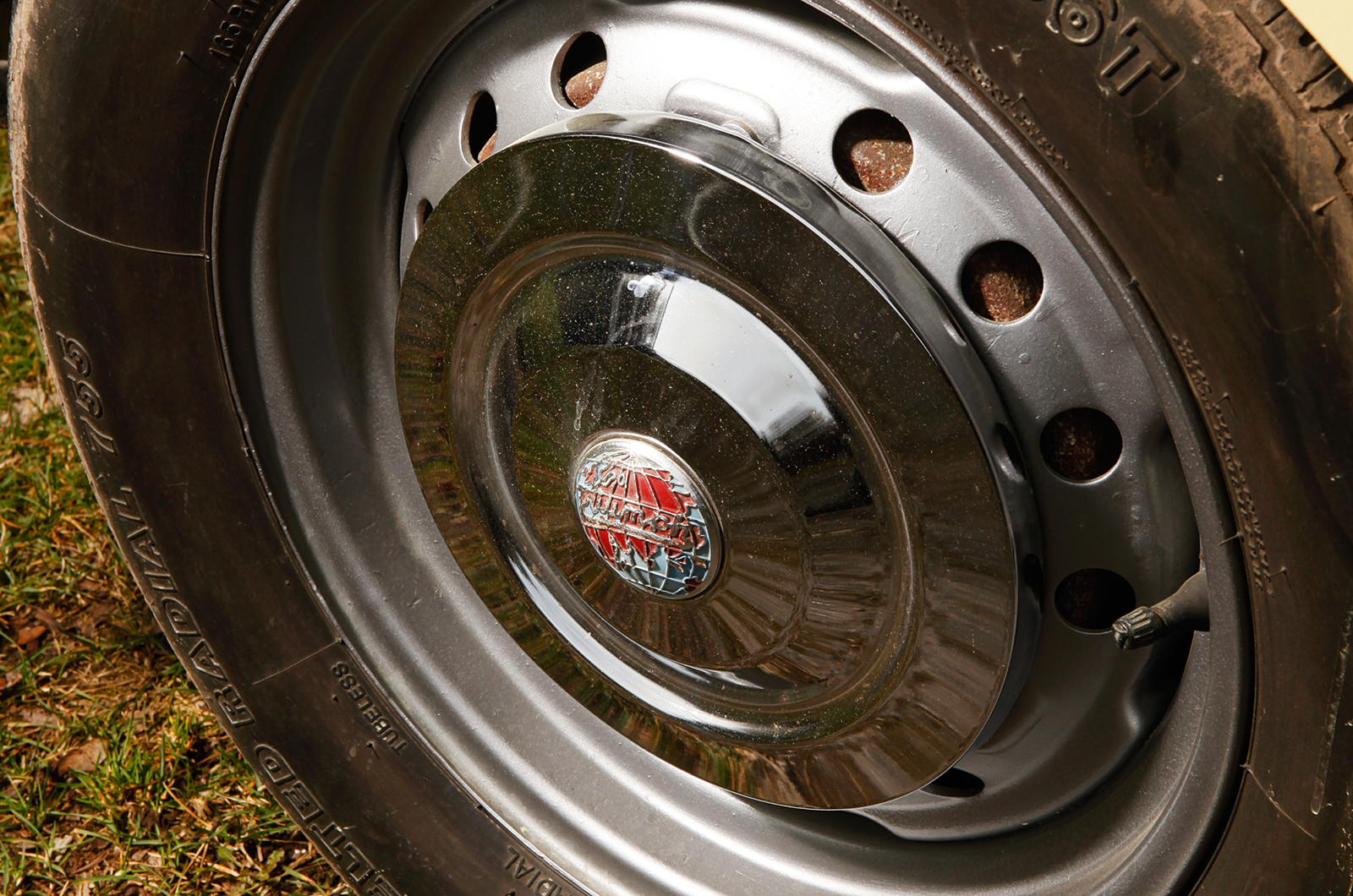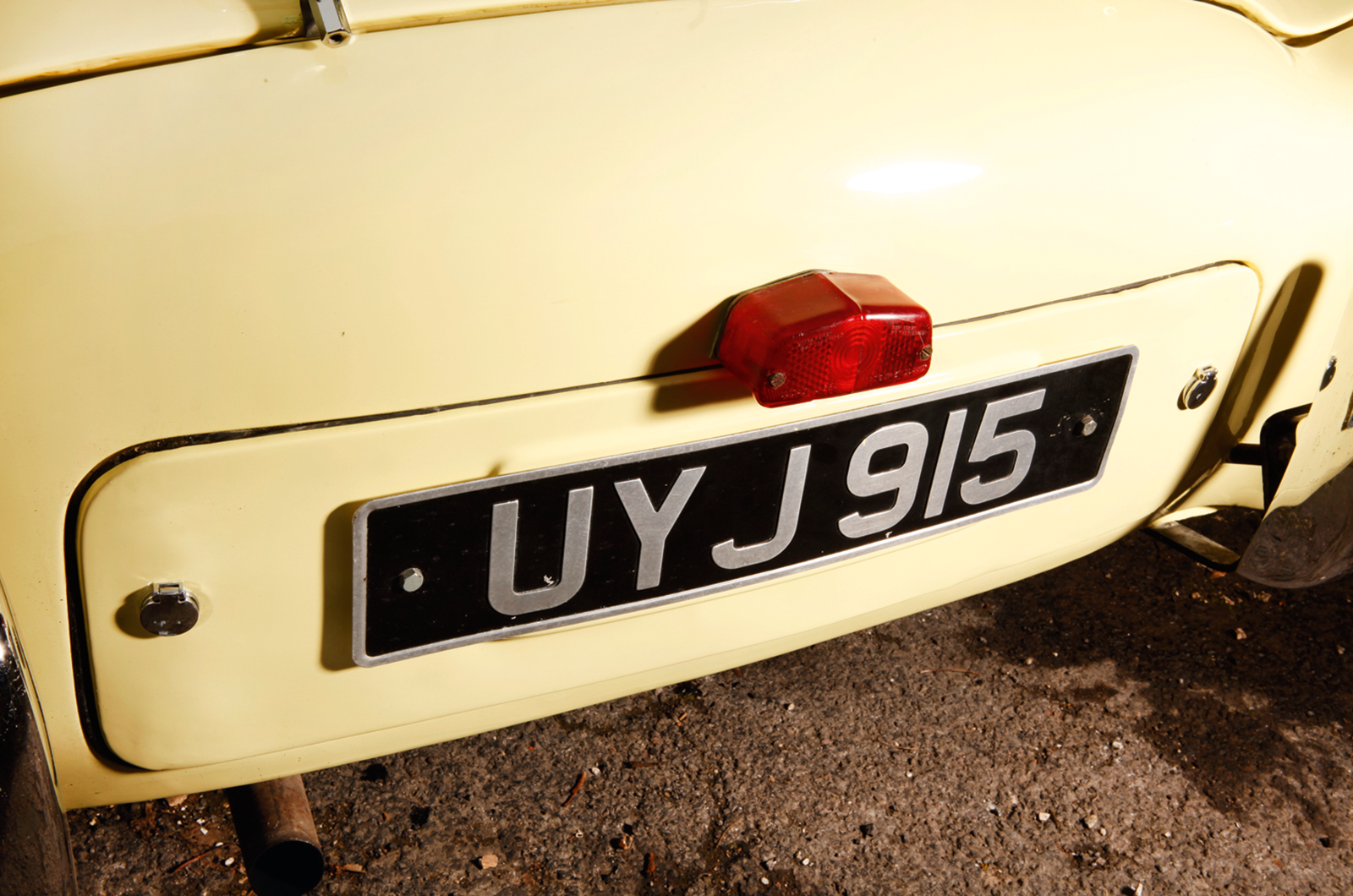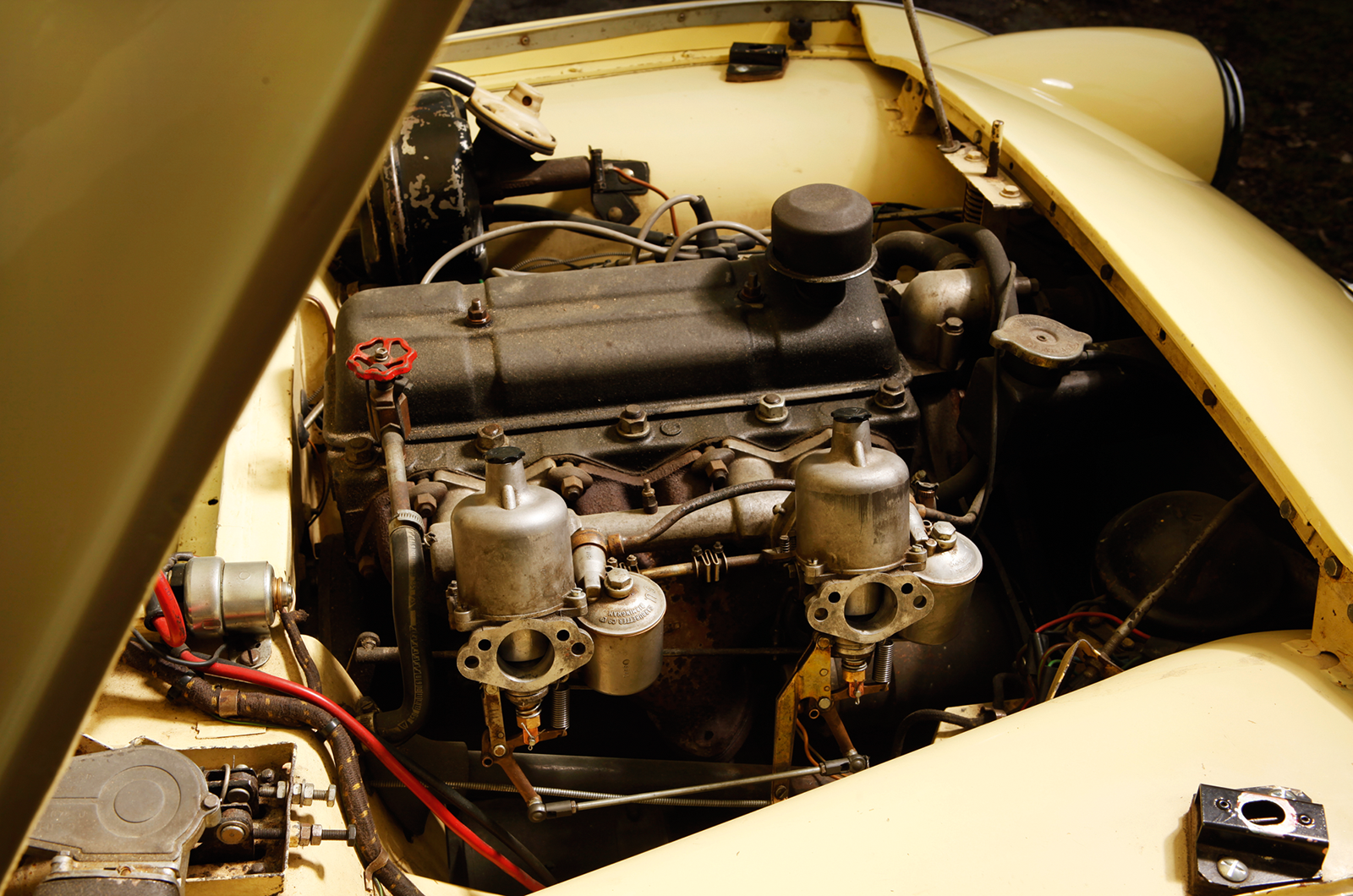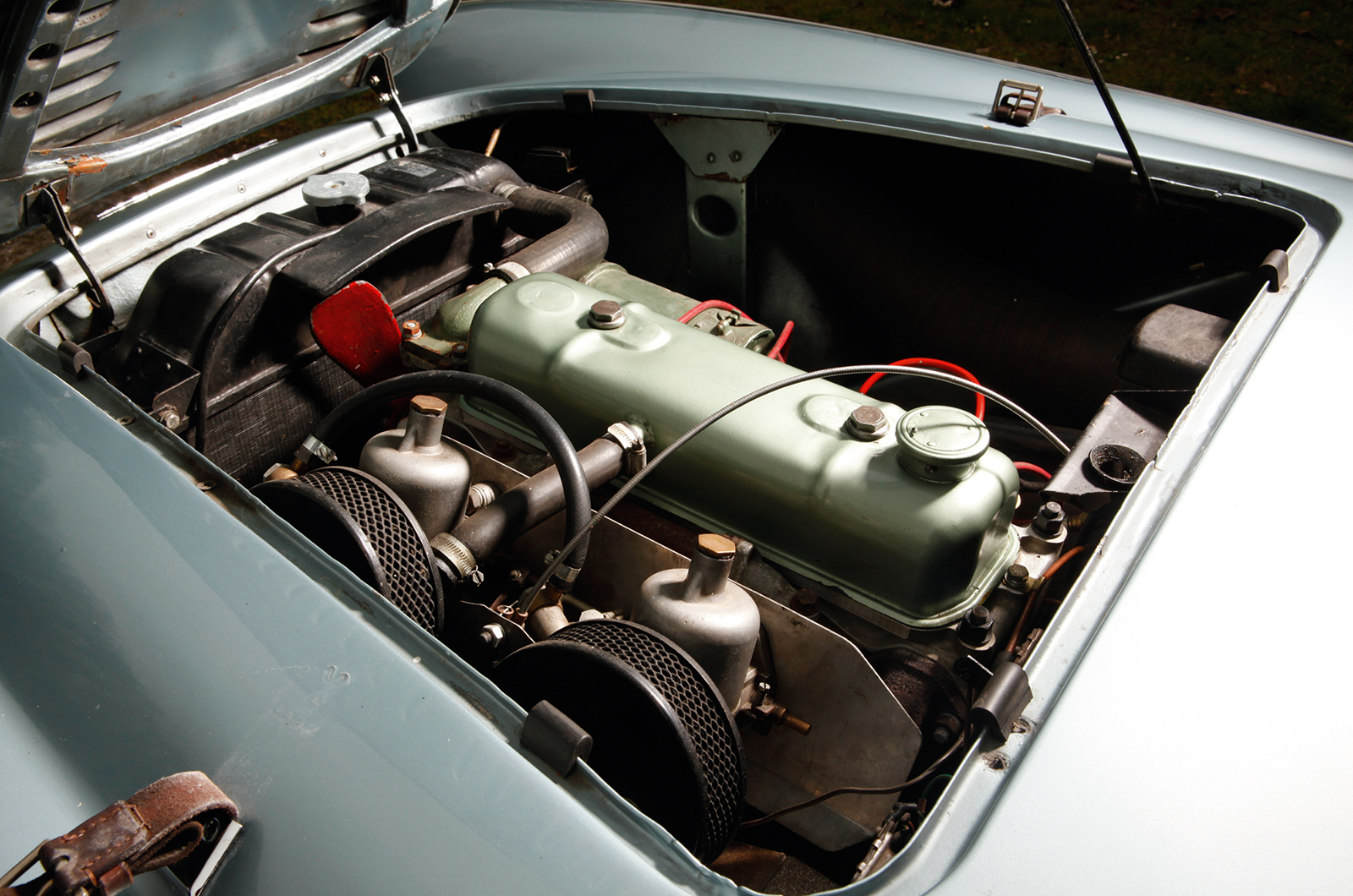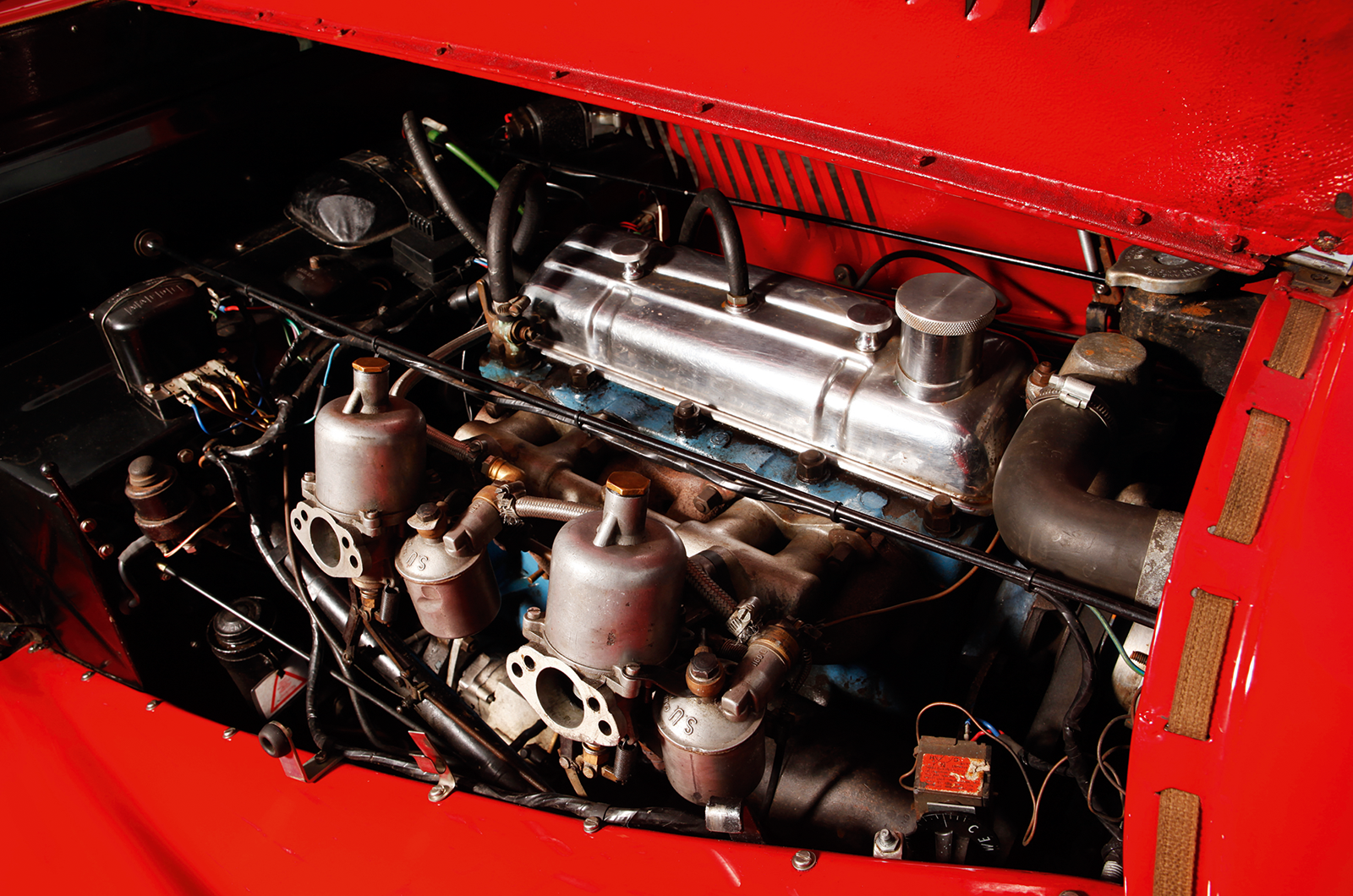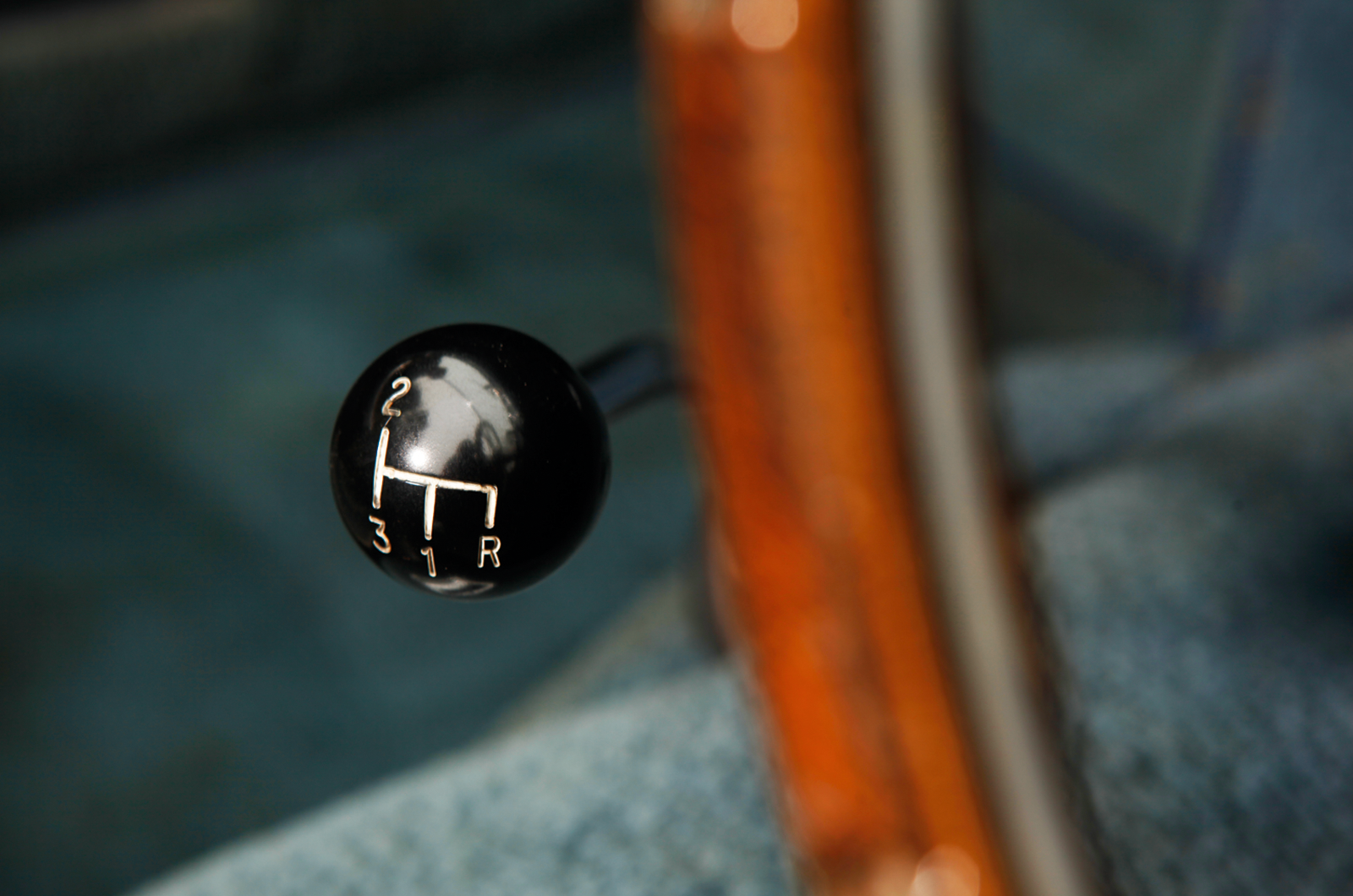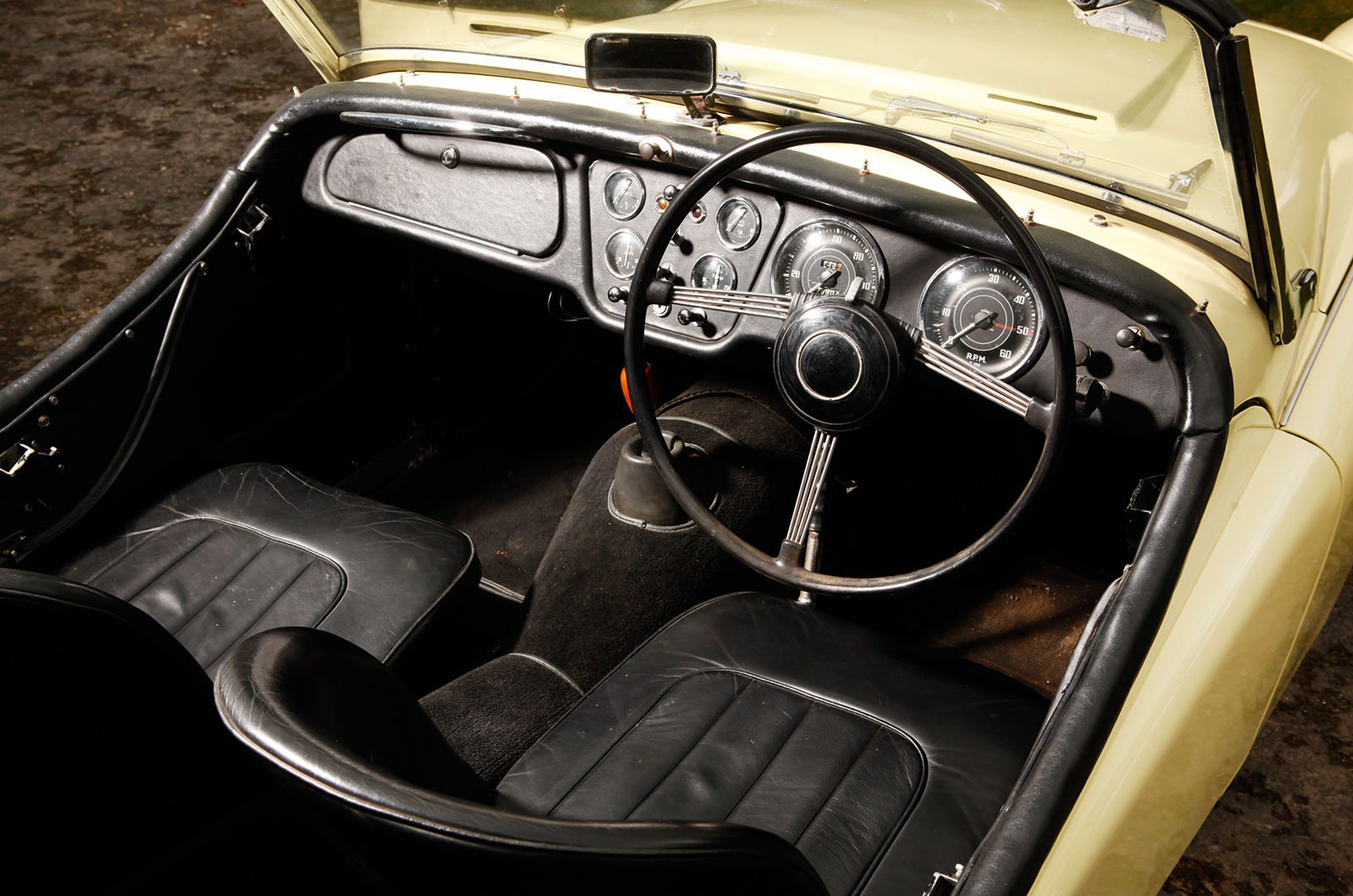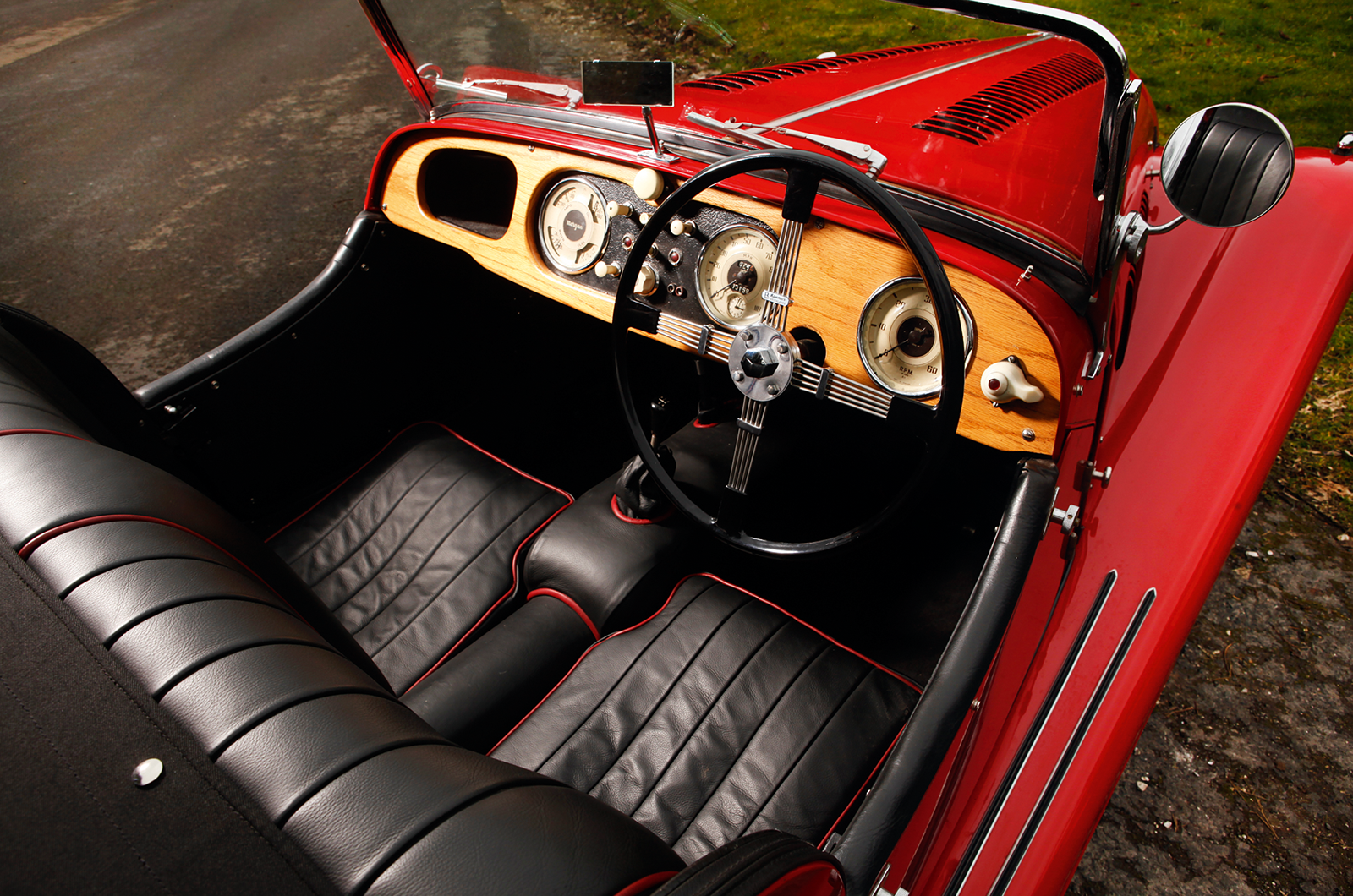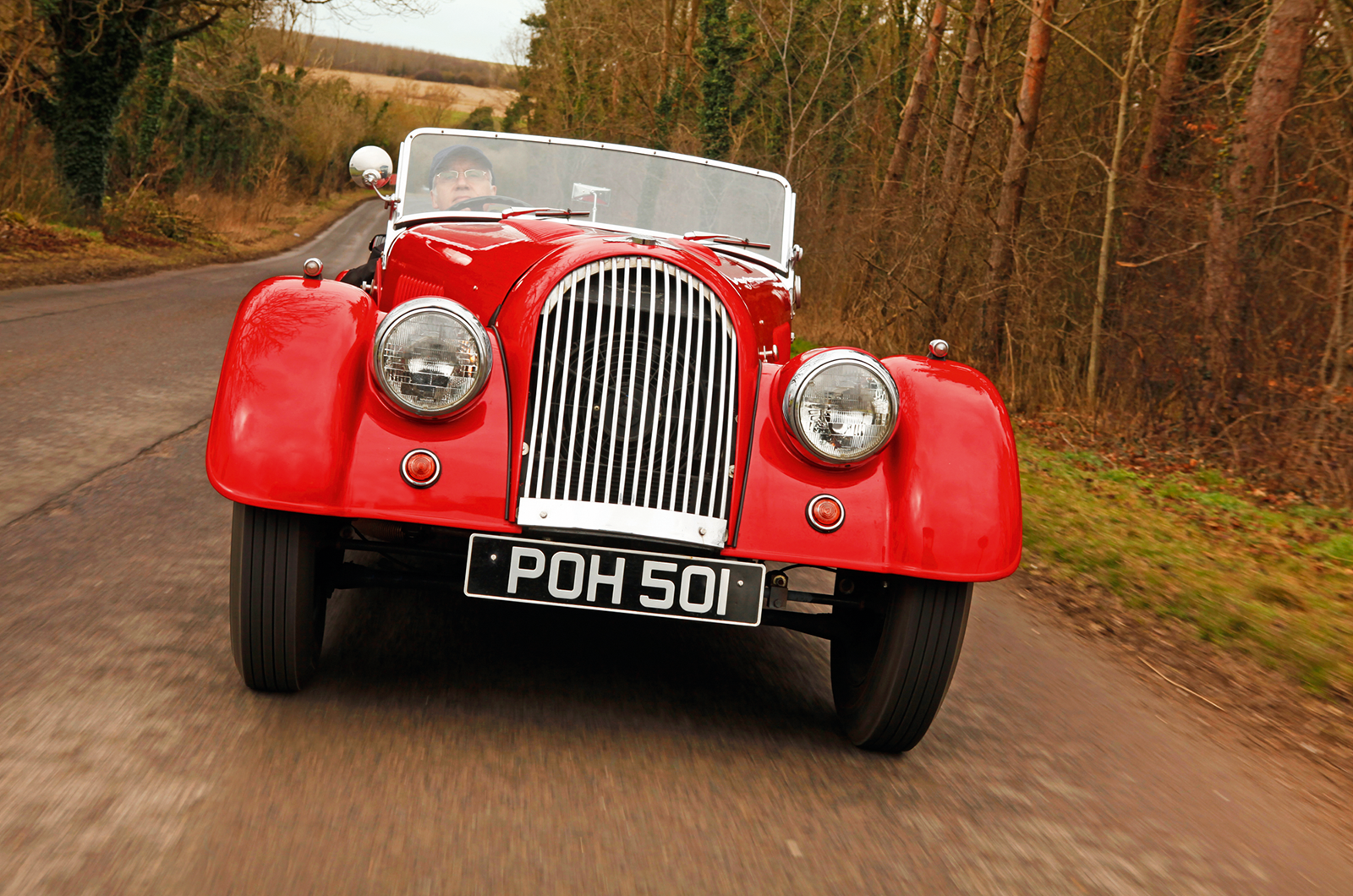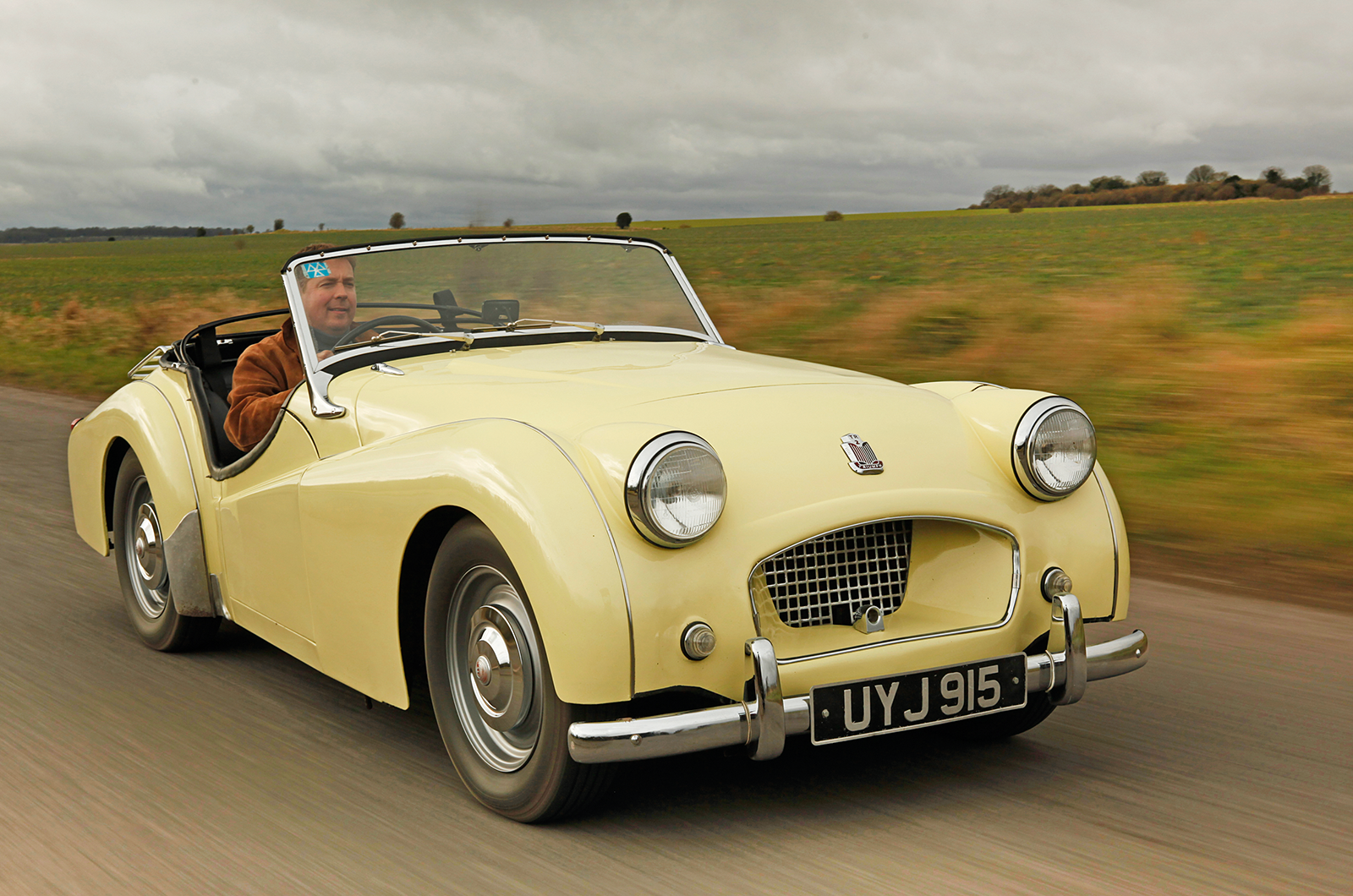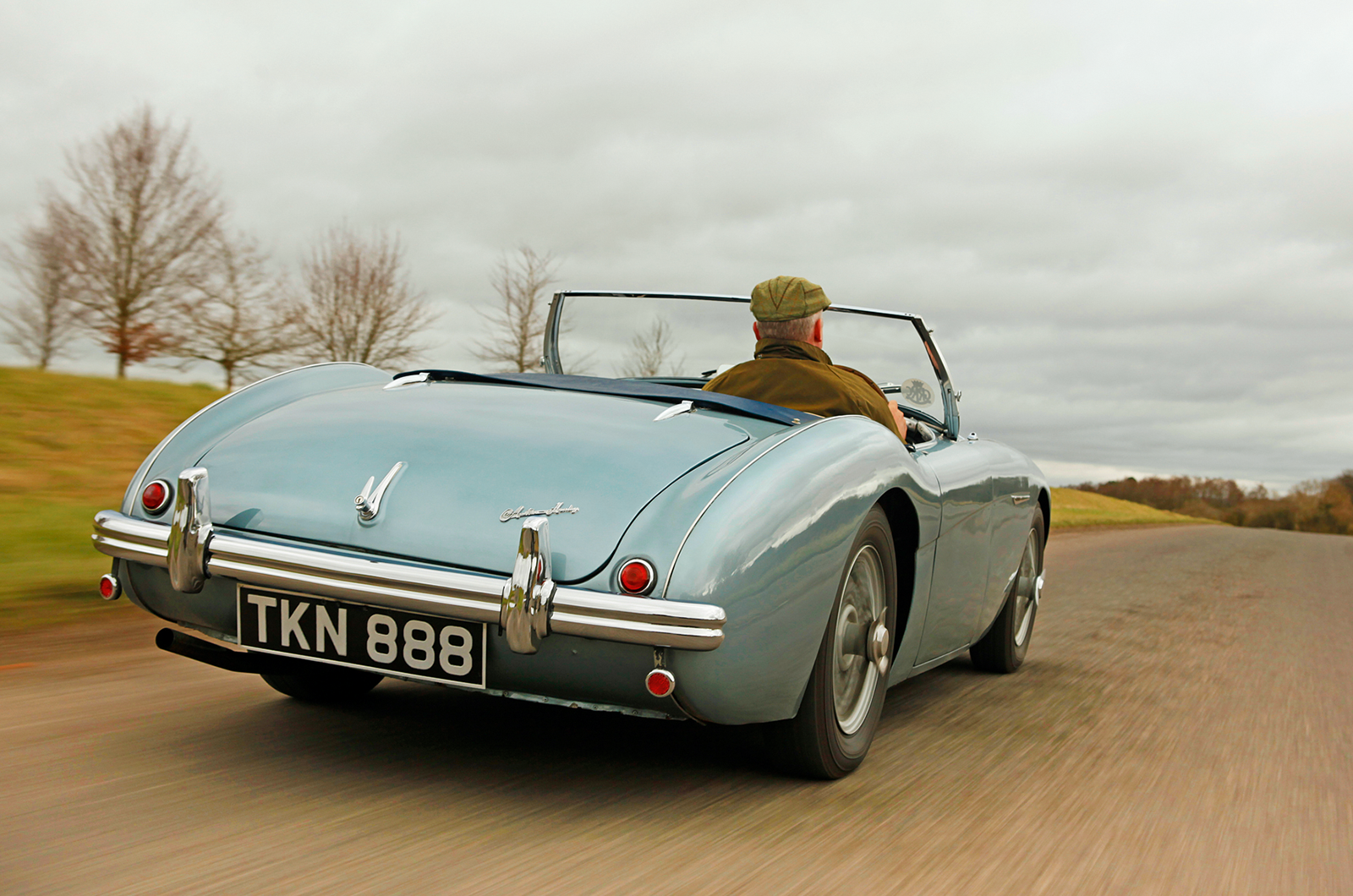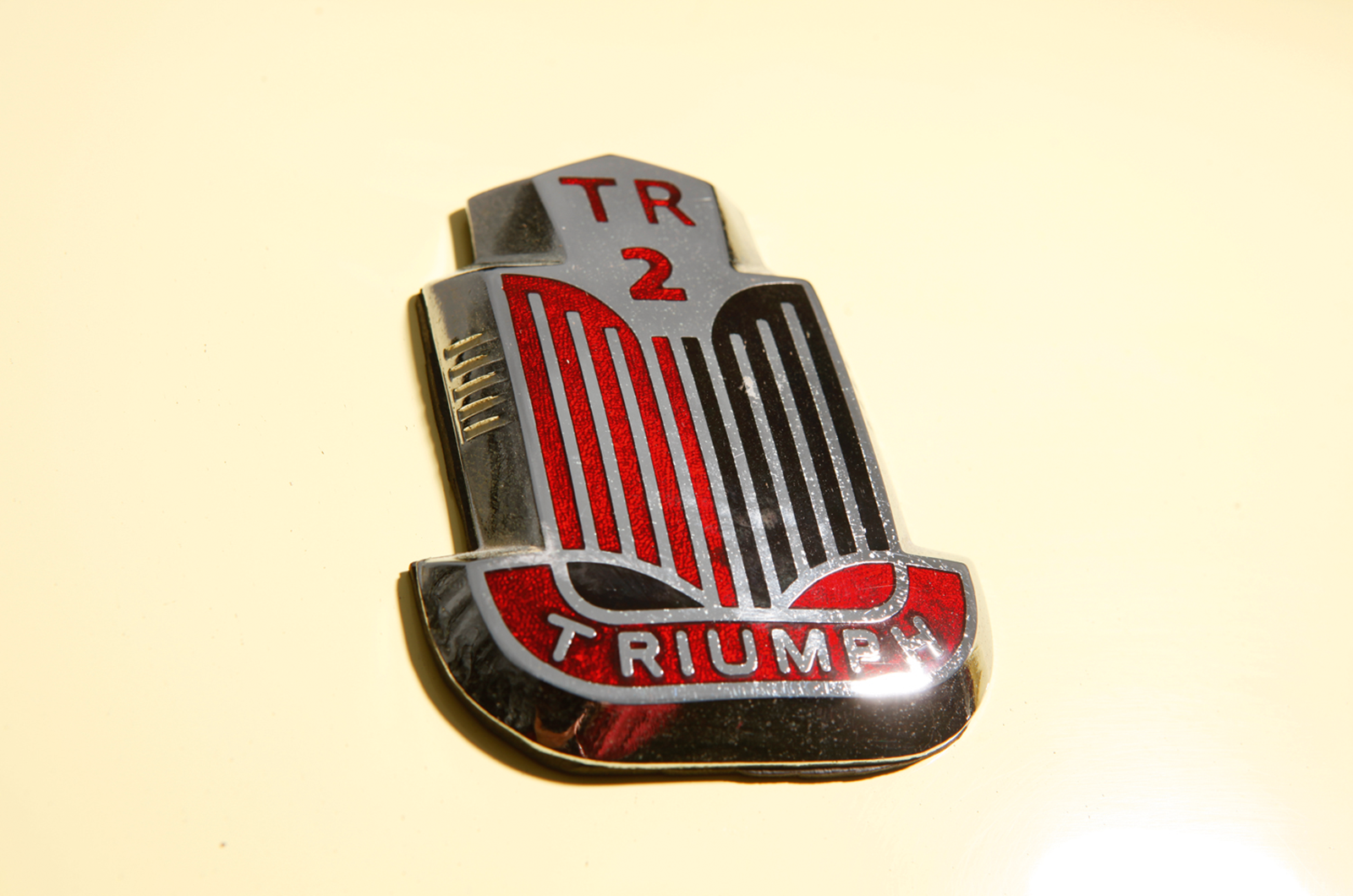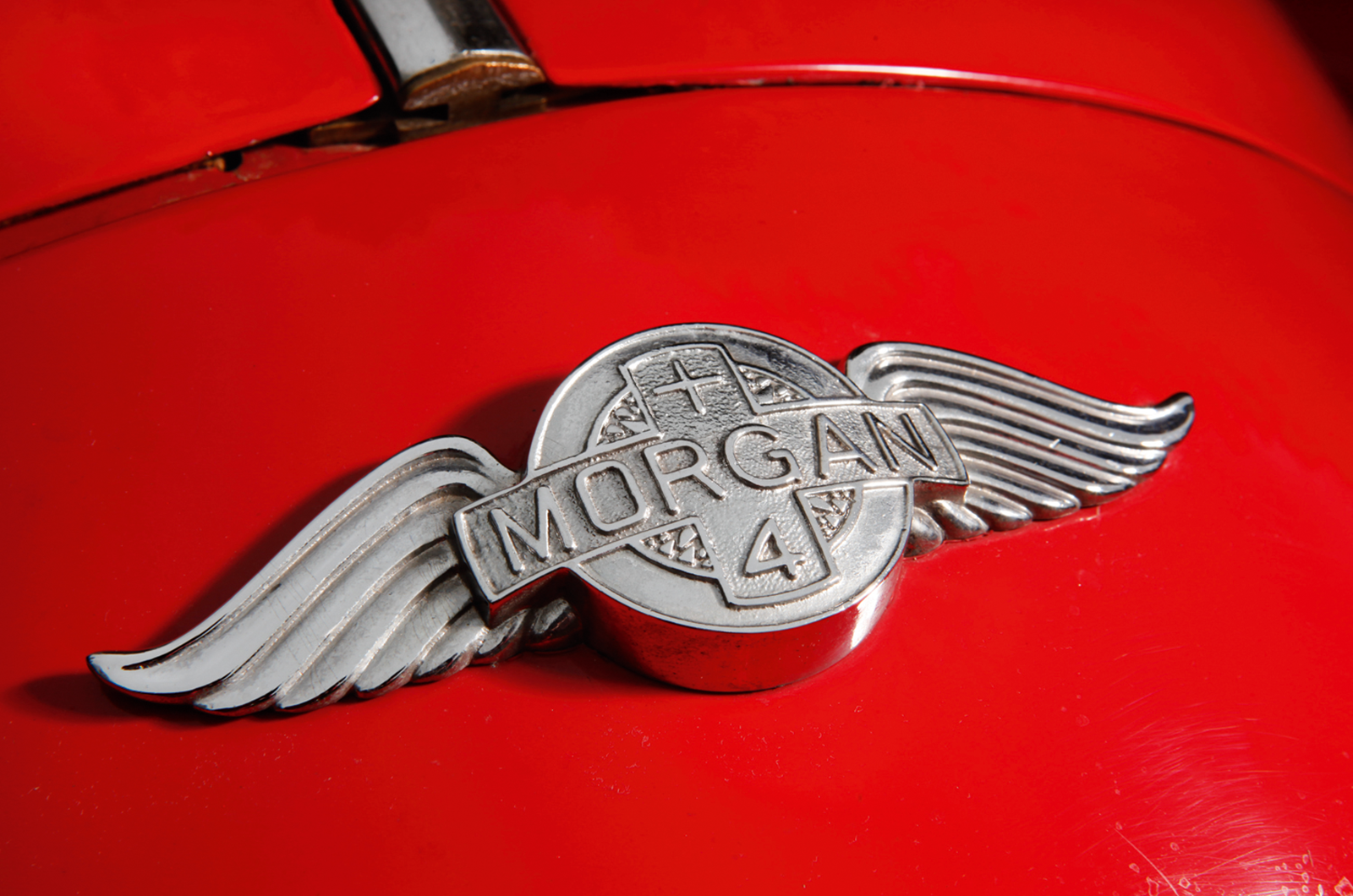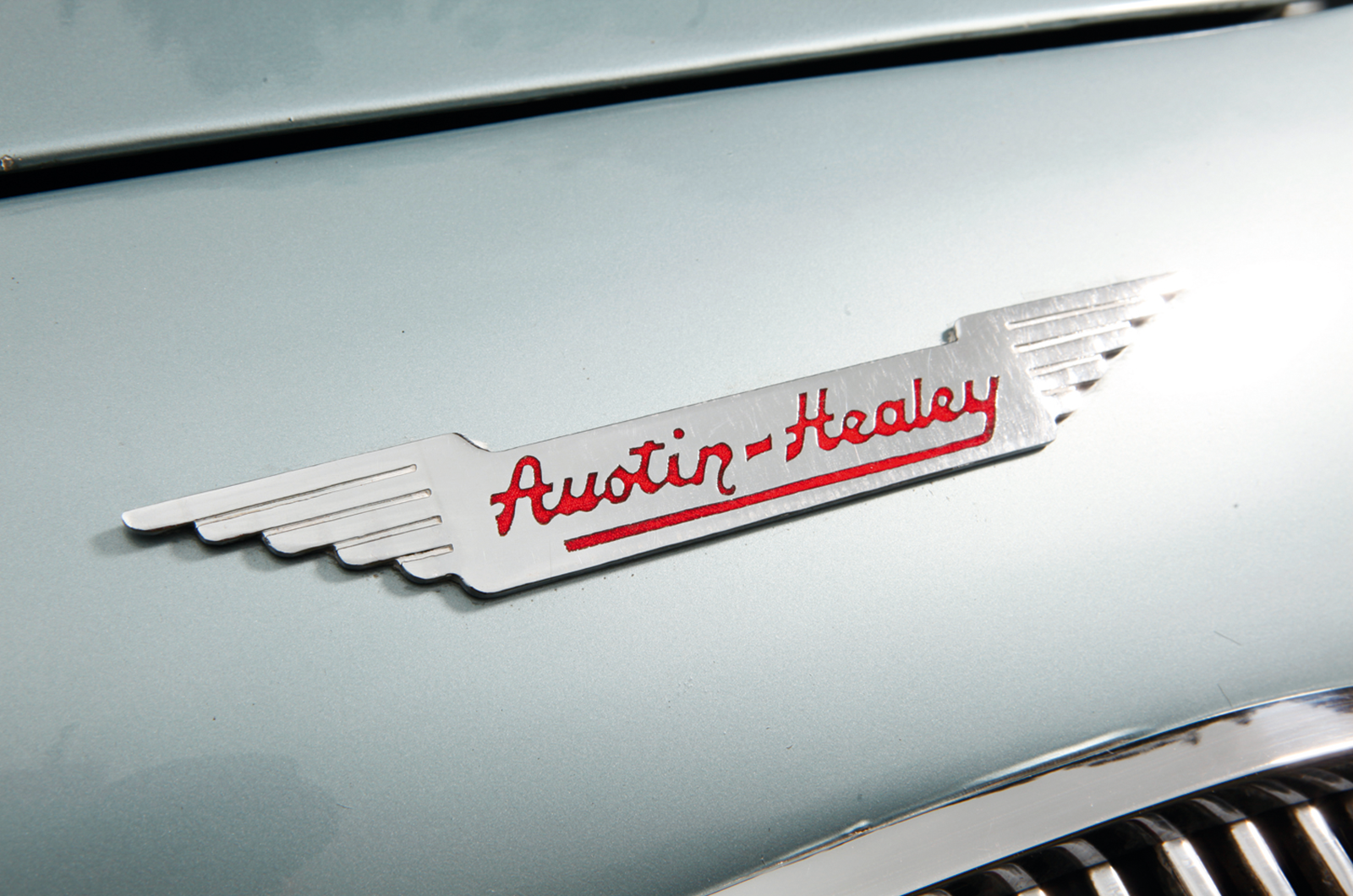The TR has the nicest gearchange with a tight, close action, a short lever and decent synchro on all ratios.
The Healey’s back-to front three-speed pattern is an anachronism that’s awkward, though its saving grace is that you don’t have to use it much.
Both the TR and Healey have fairly long-travel brake pedals, but pull up fine; the Morgan is firmer and has a little less weight to stop, so retardation is more rapid.
Structurally, the Morgan has none of the body shake you expect – a recent new frame helps – but this car also has an extra scuttle roll-hoop that tightens up the whole plot considerably.
The Healey’s all of a piece, and the best-riding car here. Surprisingly, the TR2 is the shakiest.
The Healey’s shapely rear
Sixty years after they appeared, direct comparisons matter less than when they were new.
They still appeal to different buyers, yet any of this threesome will charm you in particular ways and promise you a damn good time, whether rigid traditionalism, perky enthusiasm or lolloping languidity.
Two-thirds of this trio were about defining, if not refining the British sports car breed on a budget; in the Triumph and Healey’s case, built from simple pressings, on a simple chassis, underpinned by simple mechanicals. Tough and with less to go wrong.
Morgan ploughed its own furrow with timber-framed construction, hand-formed bodywork and even more rudimentary ironmongery. But even then history shows that the men from Malvern have never been averse to a sly bit of updating to keep up with the Joneses. Or, in this case, the Blacks and the Healeys.
Taken as a group, I was disappointed by how crudely functional the TR was when, with no comparison, they’re all beautifully enjoyable, but then I’ve been in love with the exquisite Morgan since I drove it recently.
Yet I’d swap them both in an instant for the Healey – for that is where the heartbeat of this story really lies.
Images: Tony Baker
FACTFILES
Austin-Healey 100
- Sold/number built 1953-’56/10,688
- Construction steel box-section chassis with cruciform centre section; aluminium body with steel wings and doorskins
- Engine all-iron 2660cc pushrod ‘four’, with two SU HS4 carburettors
- Max power 90bhp @ 4000rpm
- Max torque 144lb ft @ 2500rpm
- Transmission three-speed manual, with overdrive on top two, driving rear wheels
- Suspension: front independent, by double wishbones, coil springs, anti-roll bar rear live axle, semi-elliptic leaf springs, Panhard rod; lever-arm dampers f/r
- Steering cam and lever, 2½ turns lock-lock
- Brakes drums all round
- Length 12ft 7½in (3848mm)
- Width 5ft ½in (1537mm)
- Height 4ft 1in (1245mm)
- Wheelbase 7ft 6in (2286mm)
- Weight 2102lb (953kg)
- Mpg 22
- 0-60mph 10.3 secs
- Top speed 106mph
- Price new £1063
Morgan Plus 4
- Sold/number built 1950-’69/6853
- Construction Z-section steel ladder chassis with wood-framed aluminium or steel body
- Engine all-iron 1991cc pushrod ‘four’, with two SU carburettors
- Max power 90bhp @ 5000rpm
- Max torque 118lb ft @ 3000rpm
- Transmission Moss four-speed manual, with synchromesh on top three, driving rear wheels
- Suspension: front independent, by sliding pillars, coil springs rear live axle, semi-elliptic leaf springs; telescopic/lever-arm dampers f/r
- Steering cam and sector, 2¼ turns lock-lock
- Brakes drums all round
- Length 11ft 8in (3556mm)
- Width 4ft 8in (1422mm)
- Height 4ft 4in (1321mm)
- Wheelbase 8ft (2438mm)
- Weight 1848lb (838kg)
- 0-60mph 10 secs
- Top speed 100mph
- Mpg 30
- Price new £801
Triumph TR2
- Sold/number built 1953-’55/8628
- Construction steel chassis with steel body
- Engine all-iron Standard Vanguard 1991cc pushrod ‘four’, with two SU carburettors
- Max power 90bhp @ 5000rpm
- Max torque 118lb ft @ 3000rpm
- Transmission four-speed manual, with optional overdrive on top three, driving rear wheels
- Suspension: front independent, by double wishbones, coil springs, telescopic dampers rear live axle, semi-elliptic leaf springs, lever-arm dampers
- Steering cam and lever, 2¼ turns lock-lock
- Brakes drums all round
- Length 12ft 7in (3835mm)
- Width 4ft 7½in (1410mm)
- Height 4ft 2in (1270mm)
- Weight 2106lb (955kg)
- 0-60mph 12 secs
- Top speed 107mph
- Mpg 32
- Price new £844
READ MORE
The biggest classic car birthdays in 2020
Sunbeam Tiger vs Lotus Elan: brains or brawn?
28 appreciating classics and what you should pay for them
Paul Hardiman
Paul Hardiman is a regular contributor to – and former Deputy Editor of – Classic & Sports Car

